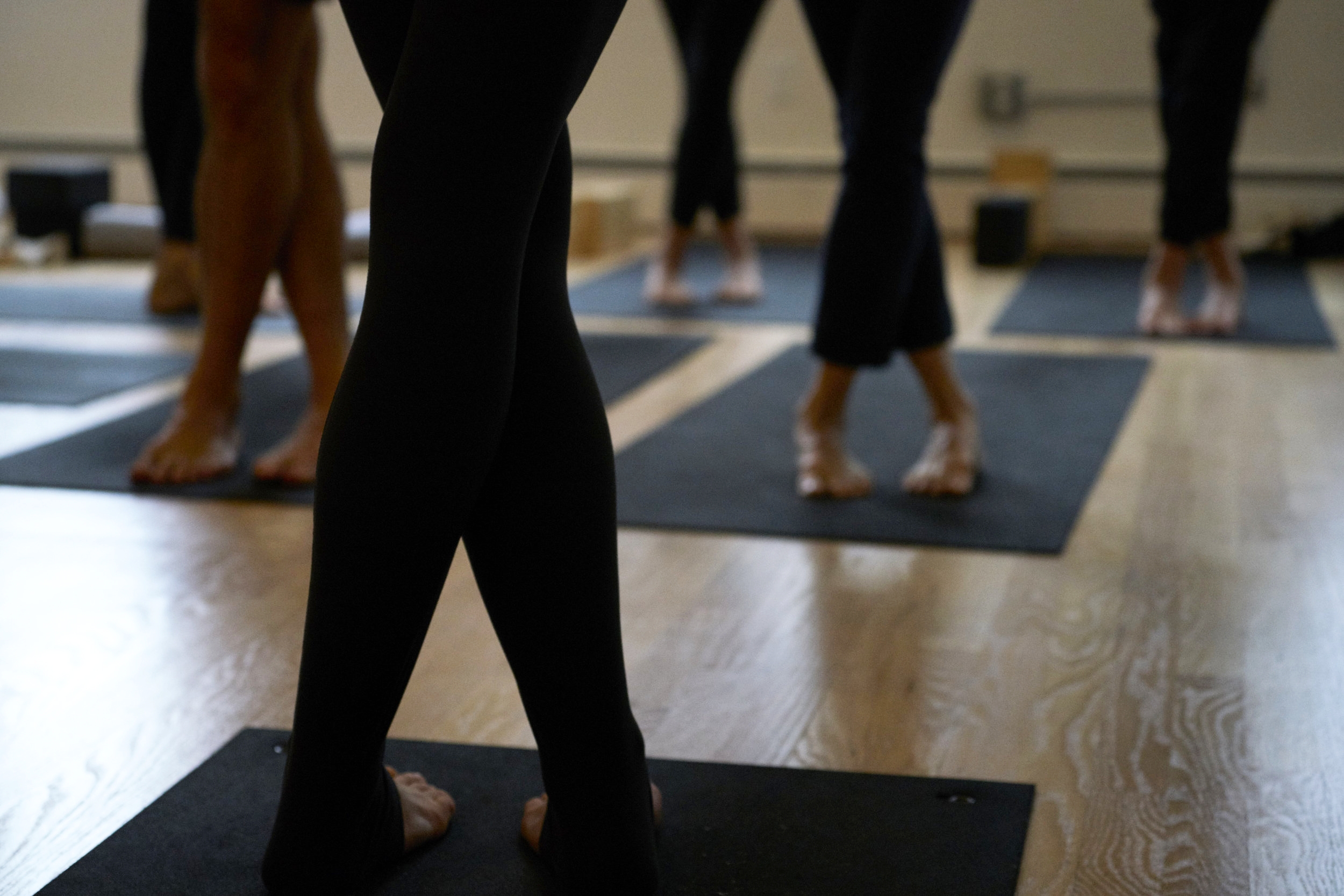WHY CROSS OUR LEGS IN SUN SALUTATION?
by Abbie Galvin
April 10th 2014
We teach our students to consciously organize the four corners of the torso -- two shoulders, two hips -- in right angles to scaffold a robust structure for the body. Organs need space to function, as their work is mostly mechanical, reliant largely on pumps and piping and itinerant fluids; likewise, the health of a joint depends on whether the pendulum is swinging straight. When structure is framed according to measure, the body's natural organization is realized and the interior enjoys greater function. One's work in yoga is to set up conditions that situate these components without pulling, yanking or compromising, in a frame that holds.
But a simple frame, under fire from life's disquiet is inadequate. Life is not polar, it is dimensional. Life is not linear, it is interconnected. Parallel lines end up separating, not holding up, like pigtails rather than a braid. Our habits, too, often don't serve us. Posture, subconscious reflexes, the way we very literally carry ourselves are all directives from an unconscious first nature, regularly stressing the fine adjustments we implement in our practice.
Cross-referencing is a way to situate the center of a structure such that each pillar adheres to a common design. One sets up an "X marks the spot", much like a common engineering practice used to fortify structures with cross-beams. Think of the Eiffel Tower, with all of its cross-crossing joists in its grid-like structure: while vertical studs carry the lion's share of the load, cross-beams ensure the distance between each stud is uniform and in agreement with the center.
So it is within a body. Cross-referencing the body's frame in a yoga pose consciously establishes a center, a second nature. It becomes a surveying tool, a technique used to connect, through one's imagination, the upper and lower body, the right and left sides of the body, and all of its possible diagonals. The result is a voluminous form that references and reconciles the center. When we cross-reference in a pose, we create a contact point in our imagination, interconnecting and substantiating the frame -this makes our structure dynamic and self-correcting. We're creating a robust mental map of the body, and a shape to occupy with more precision, more stability, and more organization.
But the purpose of practicing yoga is not to perfect yoga poses. Although we set up our poses to conform to right angles, a formal practice is a means to unlocking greater fluency and stride in the organic, curvaceous, and spherical shape of our bodies. Not unlike learning a foreign language, whereby studying formal grammar leads to spoken fluency, becoming conscious of the formal space the body occupies begets a comparable fluency of imagination. By using the mind to organize the body, we exercise and stretch the imagination alongside the body, stimulating greater insight and health. The right references information on the left, the left substantiates and references the flow on the right; the up, the down; the down, the up; the shoulder, the knee; the knee, the shoulder; the right nipple, the left shoulder blade; the left nipple, the right shoulder blade; when finally, all corners are interconnected, having lots of conversations, dynamic, a cacophony of stability, all through one's imagination. As is life.
The original question referred to crossing over our legs in sun salutations. (watch our sun salutations here) Parallel legs can hold only so much stamina, so we create a "bolt" by crossing-over, substantiating the sacral plate. With so many repetitions of our sun salutations, and so much demand on the legs and lower back, crossing over is like braiding the legs, enabling one's lower body to hold up better, developing stamina and stability rather than unraveling or leaking out energy. The more connections our poses afford, and the more precise that contact is, the better we use our poses as closed circuits, making us spherical, and therefore more buoyant.
The Eiffel Tower's strength comes from the combined organization of each stud -- the intelligence in the structure -- not load-bearing beams. Our crossed-over legs and arms are neurological circuitry, channels for information to move through. Cross referencing creates more facility of getting around oneself, making one more spherical, less rigid; by coming around rather than just driving through, one develops more perspective, more vision, and greater dimension.




